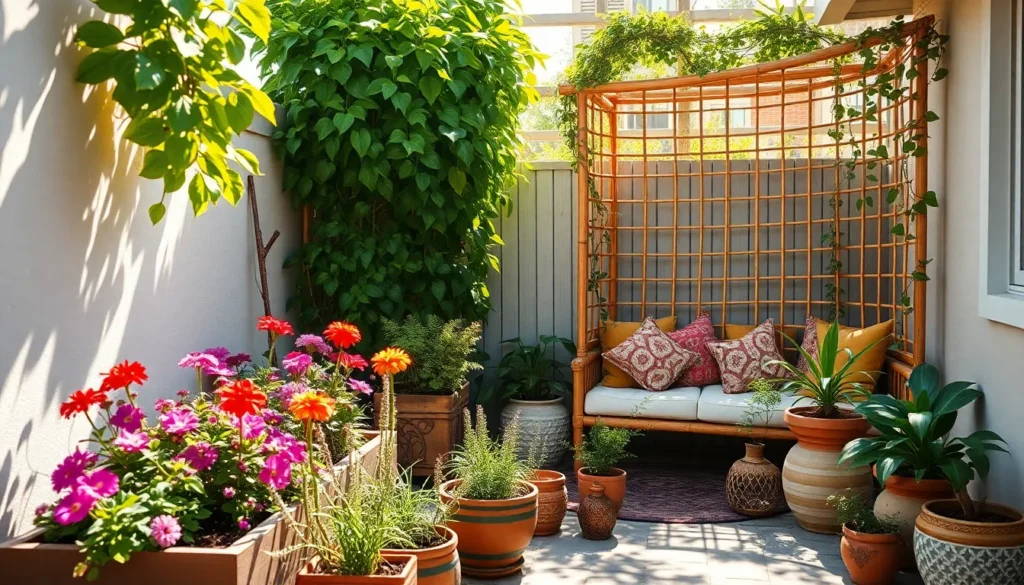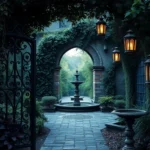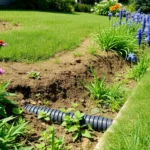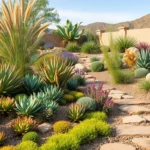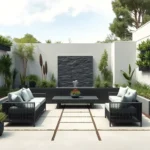We’ve all stood in our tiny outdoor spaces wondering how to create the garden of our dreams when we’re working with what feels like a postage stamp. The truth is, small yards offer incredible opportunities for creative gardening that larger spaces simply can’t match – you just need the right approach.
Small doesn’t mean settling for less. In fact, compact gardens often become the most charming and functional outdoor retreats because every square foot serves a purpose. We’ll show you how to maximize vertical space, choose plants that deliver maximum impact, and create defined zones that make your yard feel twice its actual size.
Whether you’re dealing with a narrow side yard, a tiny backyard, or even just a small patio, we’ve gathered proven strategies that transform cramped spaces into lush garden sanctuaries. Let’s turn your small yard challenge into your greatest gardening success story.
Maximize Vertical Space With Climbing Plants and Trellises
We can transform any small yard into a lush garden paradise by thinking upward instead of outward. Vertical gardening answers multiply our growing space while adding visual depth and natural privacy screens to compact outdoor areas.
Install Wall-Mounted Planters
Wall-mounted planters instantly expand our gardening real estate without sacrificing precious ground space. We recommend installing cedar or recycled plastic planters at varying heights to create visual interest while accommodating different plant root systems.
Sturdy mounting brackets support planters weighing up to 50 pounds when properly anchored into wall studs or masonry. We’ve found that staggered arrangements work best, with planters positioned 18 to 24 inches apart vertically and offset horizontally by 12 inches.
Choose lightweight potting mix specifically designed for container gardening to reduce overall weight stress on mounting systems. We suggest filling planters with trailing plants like petunias, nasturtiums, or cherry tomatoes that cascade downward to maximize the vertical display effect.
Create Living Walls With Ivy and Vines
Living walls transform blank fence panels or building walls into stunning green backdrops that define our small garden spaces. We can establish these natural screens using fast-growing vines like Boston ivy, Virginia creeper, or clematis that attach directly to surfaces without additional support structures.
English ivy covers approximately 50 square feet per plant within three growing seasons, making it an excellent choice for quick coverage. We recommend spacing ivy plants 3 to 4 feet apart along the base of walls or fences for optimal growth patterns.
Annual vines like morning glories or moonflowers provide seasonal color while perennial options such as honeysuckle or jasmine offer year-round structure plus fragrant blooms. We position these climbing plants in containers or narrow border beds that require only 12 to 18 inches of ground space.
Use Bamboo Trellises for Privacy and Greenery
Bamboo trellises serve dual purposes in our small garden designs by providing plant support while creating natural privacy barriers. We can construct custom trellis panels using bamboo poles connected with galvanized wire or zip ties, creating screens that reach heights of 6 to 8 feet.
Portable bamboo structures allow us to reposition privacy screens seasonally or as our garden layout evolves. We anchor these lightweight frames using concrete-filled buckets or ground stakes that don’t require permanent installation.
Fast-growing climbing vegetables like pole beans, cucumbers, or peas thrive on bamboo supports while producing fresh harvests throughout the growing season. We train ornamental climbers such as sweet peas, black-eyed Susan vines, or cardinal climber to add color and attract beneficial pollinators to our vertical growing systems.
Design Multi-Level Garden Beds for Maximum Impact
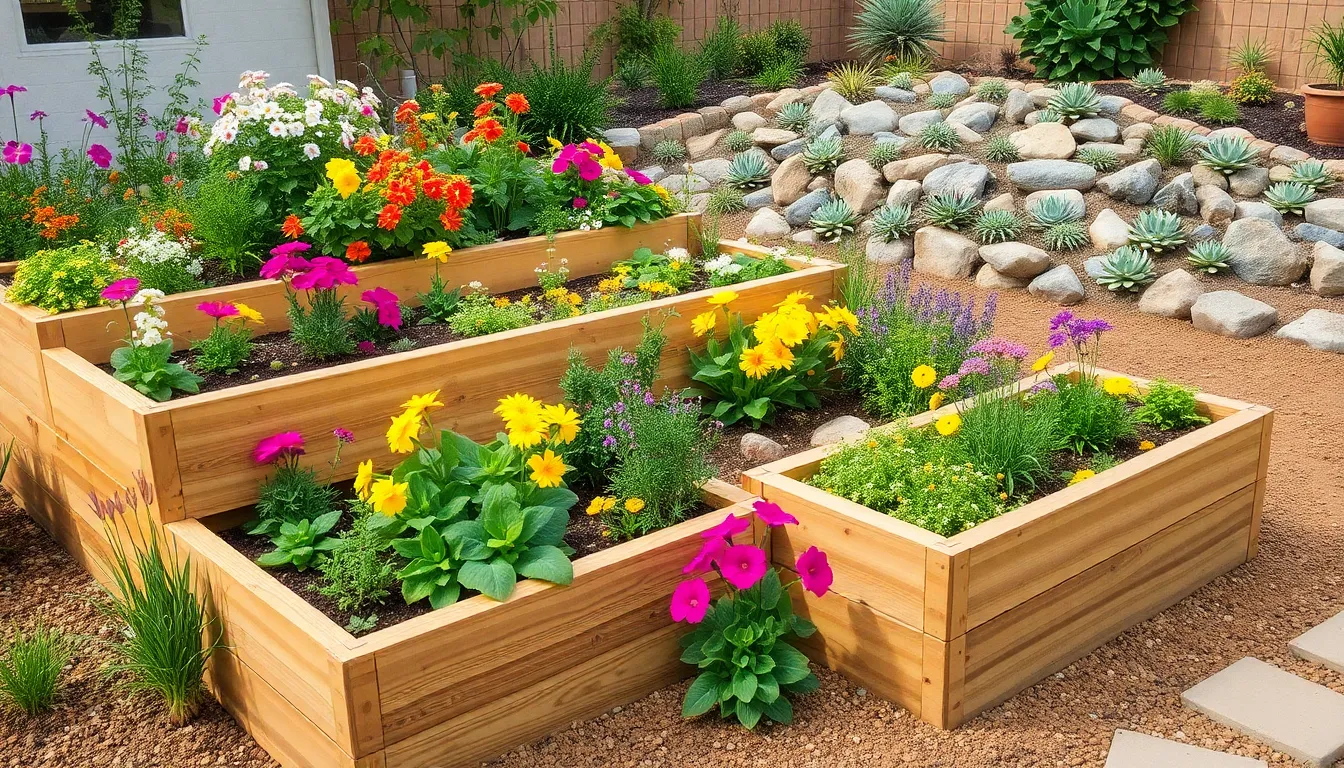
Multi-level garden beds transform vertical space into ever-changing growing areas that guide the eye upward and create the illusion of a larger garden. This layered approach accommodates various plant species within compact areas while establishing clear visual hierarchy.
Build Raised Planter Boxes
Raised planter boxes deliver improved soil quality and drainage while providing easier access for maintenance tasks. We recommend constructing these elevated beds using cedar, composite materials, or galvanized steel to ensure longevity and proper drainage systems.
Benefits of raised construction include:
- Enhanced soil control and drainage capabilities
- Reduced back strain during planting and harvesting
- Clear pathway organization that prevents overcrowding
- Customizable sizing for any space constraint
Vegetables, herbs, and flowering plants thrive in these controlled environments where we can optimize soil composition and moisture levels. The elevated design also creates natural boundaries that define different garden zones within our small yard layout.
Create Tiered Container Gardens
Tiered container gardens maximize growing space through strategic vertical arrangements using multi-level stands or stepped platforms. Terra-cotta, plastic, and wooden containers work effectively when arranged at varying heights to accommodate different plant needs.
Implementation strategies we use:
- Position sun-loving plants on upper tiers for maximum light exposure
- Place shade-tolerant varieties on lower levels beneath taller plants
- Use trailing species to create cascading effects between levels
- Rotate containers seasonally for optimal plant health
This flexible system allows us to rearrange plants based on changing sunlight patterns or aesthetic preferences throughout the growing season. Renters particularly benefit from this portable solution that moves easily between locations.
Install Cascading Rock Gardens
Cascading rock gardens create natural flowing landscapes using layered stone structures combined with drought-tolerant plants. We build these gardens using various rock sizes to establish different levels that guide water flow and create visual movement.
Plant selections for rock gardens:
| Plant Type | Examples | Growing Conditions |
|---|---|---|
| Succulents | Sedum, Echeveria | Full sun, well-draining soil |
| Groundcovers | Creeping Thyme, Moss Phlox | Partial shade, moderate water |
| Alpine Plants | Hens and Chicks, Rock Cress | Full sun, minimal water |
Succulents, sedums, and hardy groundcovers establish quickly in the well-draining conditions these rock structures provide. The cascading design also serves practical purposes by managing water runoff and preventing erosion in sloped areas of our small yard spaces.
Choose Compact Plant Varieties That Pack a Punch
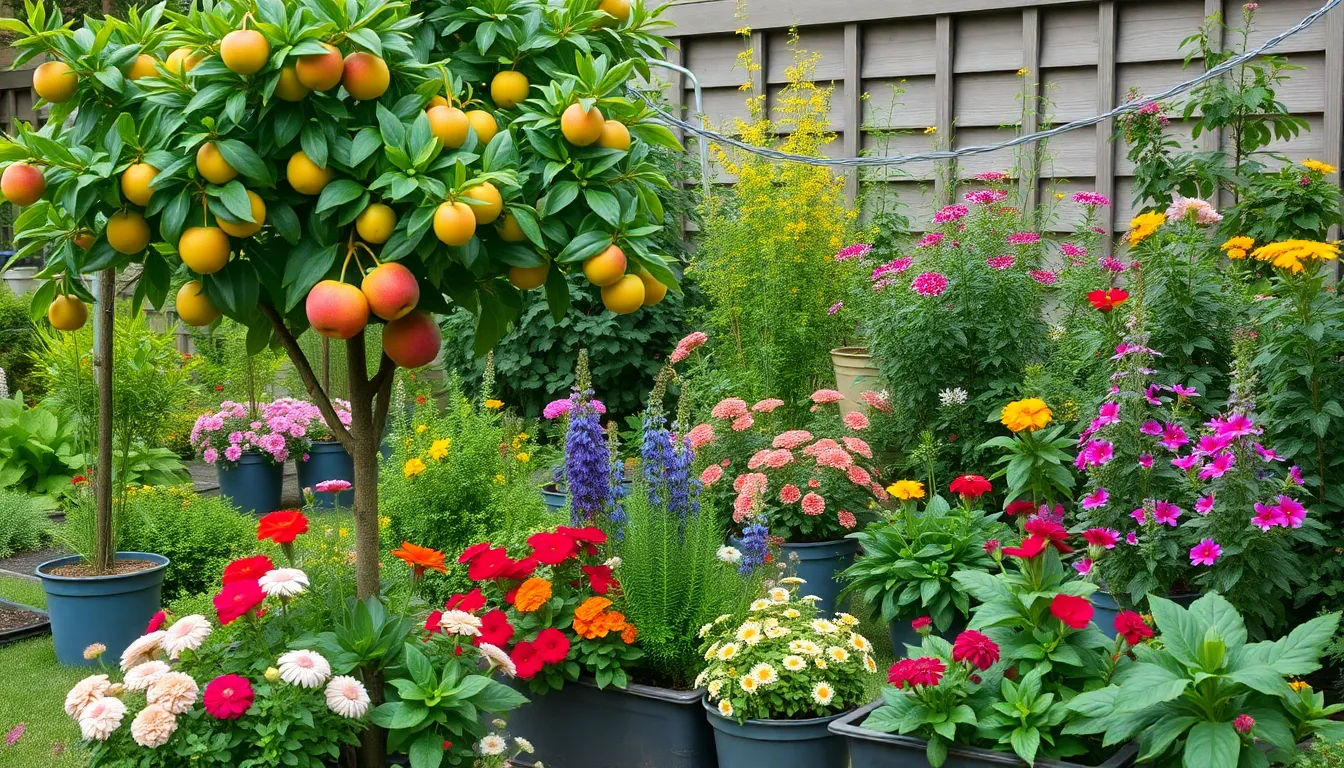
Maximizing your small garden’s potential means selecting plants that deliver big results in minimal space. Strategic plant selection transforms tight areas into productive, beautiful landscapes that rival larger gardens.
Select Dwarf Fruit Trees and Berry Bushes
Dwarf fruit trees revolutionize small yard gardening by providing full-sized harvests without overwhelming your space. These compact varieties reach only 6-8 feet tall compared to standard trees that can exceed 25 feet. Apple, pear, and cherry trees bred specifically for small gardens produce abundant fruit while fitting comfortably in containers or narrow planting beds.
Berry bushes offer exceptional value for space-conscious gardeners seeking fresh produce. Compact blueberry varieties like ‘Top Hat’ and ‘Sunshine Blue’ thrive in containers while producing generous harvests. These dwarf bushes reach just 2-3 feet in height yet yield up to 5 pounds of berries per plant. We recommend planting multiple varieties to extend your harvest season from early summer through fall.
Container growing extends your options for fruit production in the smallest yards. Dwarf citrus trees flourish in large pots, allowing you to move them indoors during cold weather. Meyer lemons and key limes adapt particularly well to container life while providing year-round harvests in suitable climates.
Plant Mini Vegetables in Small Spaces
Mini vegetables pack full-sized nutrition and flavor into compact plants perfect for tight growing areas. Cherry tomatoes like ‘Tiny Tim’ and ‘Red Robin’ produce abundant harvests while occupying less than one square foot of garden space. These determinate varieties reach maturity quickly and don’t require extensive staking or pruning.
Compact lettuce varieties transform small beds into productive salad gardens throughout multiple growing seasons. Varieties like ‘Little Gem’ and ‘Tom Thumb’ mature in just 6-8 weeks while taking up minimal ground space. Succession planting every two weeks ensures continuous harvests from spring through fall.
Patio cucumbers deliver full-sized vegetables from plants specifically bred for container growing. Varieties like ‘Patio Snacker’ and ‘Spacemaster’ produce standard cucumbers while occupying just 2-3 square feet of growing space. These compact plants require minimal support yet yield impressive harvests comparable to traditional garden varieties.
Incorporate Compact Flowering Perennials
Compact lavender varieties bring fragrance and color to small gardens while requiring minimal maintenance. English lavender cultivars like ‘Munstead’ and ‘Hidcote’ reach only 12-18 inches tall yet produce abundant flower spikes throughout summer. These drought-tolerant plants thrive in containers and small beds while attracting beneficial pollinators to your garden.
Miniature roses deliver classic garden elegance without overwhelming small spaces. Patio rose varieties like ‘Knockout’ and ‘Flower Carpet’ bloom continuously from spring through frost while staying under 3 feet tall. These disease-resistant plants require less pruning than traditional roses while providing months of colorful blooms.
Creeping thyme creates living carpets that soften hardscaping while releasing pleasant aromas when walked upon. This low-growing perennial spreads to fill gaps between stepping stones or cascade over retaining walls. Varieties like ‘Elfin’ and ‘Red Creeping’ reach only 2-3 inches tall yet provide season-long ground cover that requires virtually no maintenance once established.
Create Functional Zones in Your Small Garden Space
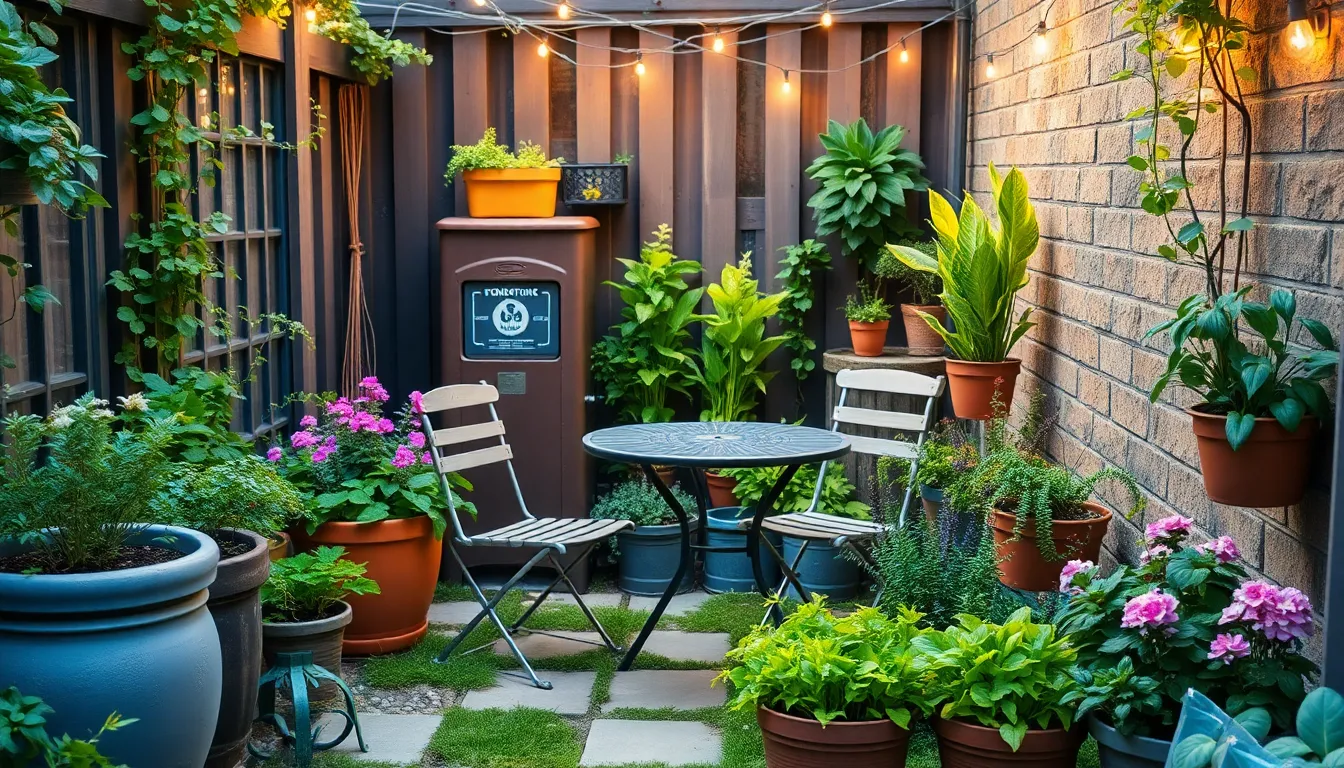
Dividing your compact garden into functional zones maximizes usability and visual appeal without overcrowding the space. Research shows that thoughtful zoning transforms even the smallest yards into multi-purpose outdoor sanctuaries.
Designate a Cozy Seating Area
Designate a exact spot for relaxation by creating a cozy seating area that encourages social interaction and peaceful moments. Bistro sets work perfectly for intimate conversations, while built-in benches maximize space efficiency along fence lines or garden borders. Folding chairs offer versatility when you need to reconfigure your outdoor space for different activities.
Position your seating zone strategically on patios, decks, or grass corners to take advantage of natural shade or morning sunlight. Container gardens surrounding your seating area create natural boundaries and enhance privacy. Fairy lights strung overhead transform evening gatherings into magical experiences, while trellises provide backdrop structure for climbing plants.
Multi-functional furniture pieces serve dual purposes in compact spaces. Storage benches hide gardening tools while providing comfortable seating. Weather-resistant cushions in bright colors add personality and comfort to your outdoor retreat.
Establish a Dedicated Herb Garden Corner
Allocate a small section specifically for growing herbs that require minimal space but deliver maximum practical benefits. Vertical planters mounted on walls or fences multiply your growing capacity without consuming precious ground space. Hanging pots work exceptionally well for trailing herbs like oregano and thyme.
Tiered shelves create organized herb displays that make harvesting convenient while adding visual interest to blank walls. Herbs such as basil, mint, and parsley thrive in containers and contribute fresh flavors to your cooking. Rosemary and sage provide year-round greenery while releasing pleasant fragrances throughout your garden.
Container herb gardens offer flexibility for seasonal rotations and optimal sun exposure management. Repurposed wooden crates and galvanized metal planters add rustic charm to your herb corner. Label each herb variety to help guests identify plants and encourage culinary experimentation.
Set Up a Small Composting Station
Install a compact composting system in an accessible corner that doesn’t obstruct your garden’s visual flow. Tumbler composters process organic waste efficiently while containing odors and deterring pests. Worm bins provide excellent composting results in minimal space, producing nutrient-rich castings for your plants.
Position your composting station strategically near your kitchen door for convenient food scrap disposal, yet far enough from seating areas to maintain pleasant outdoor dining experiences. Wooden crates repurposed as composting bins blend naturally with garden aesthetics while providing adequate ventilation for decomposition.
Composting recycles kitchen and garden waste into nutrient-rich soil amendments that support healthy plant growth throughout your small garden. Three-compartment systems allow continuous composting cycles, ensuring steady soil improvement supplies. Screen your composting area with lattice panels or tall plants to maintain visual appeal while supporting sustainability goals.
Utilize Container Gardening for Ultimate Flexibility

Container gardening revolutionizes small yard spaces by offering unmatched versatility and control. We can position these portable gardens anywhere with adequate light, from windowsills to balconies to front walkways.
Mix and Match Decorative Pots and Planters
Combining different shapes, sizes, and colors creates an eye-catching display that transforms ordinary containers into garden focal points. We recommend mixing rustic barrels with sleek modern planters, pairing large statement pots with smaller herb containers, and incorporating various materials like terracotta, ceramic, and galvanized metal. This diversity adds visual depth while accommodating different plant needs and growth patterns.
Strategic placement of varied containers allows us to create themed sections within our small garden space. Tall cylindrical planters work perfectly for vertical elements like herbs and trailing plants, while wide shallow containers suit sprawling vegetables like lettuce and spinach. Color coordination between planters can tie together different garden zones, creating a cohesive look even though limited square footage.
Create Mobile Garden Displays on Wheels
Rolling planters offer the ultimate flexibility for adapting to changing conditions throughout growing seasons. We can easily relocate containers to follow optimal sun patterns, protect sensitive plants during harsh weather, or reorganize layouts for seasonal displays and maintenance access.
Wheeled container systems maximize growing potential by allowing us to rotate crops and plants based on their exact light requirements. Sun loving tomatoes and peppers can be moved to capture morning light, while shade tolerant leafy greens can be repositioned to cooler afternoon spots. This mobility also enables us to bring container gardens indoors during extreme weather conditions.
Layer Containers for Visual Interest
Tiered arrangements create dramatic vertical displays that make small spaces appear larger and more abundant. We achieve this effect by placing larger containers as foundation pieces, medium sized pots at mid level, and smaller accent containers at the top tier. This layering technique accommodates plants with different height requirements while maximizing growing space.
Strategic height variation draws the eye upward and creates the illusion of expanded garden space. Placing trailing plants like cherry tomatoes in elevated containers allows them to cascade downward, while upright herbs and vegetables fill middle and lower tiers. This three dimensional approach transforms flat container arrangements into ever-changing garden sculptures that serve both aesthetic and practical purposes.
Incorporate Mirror Tricks to Expand Visual Space
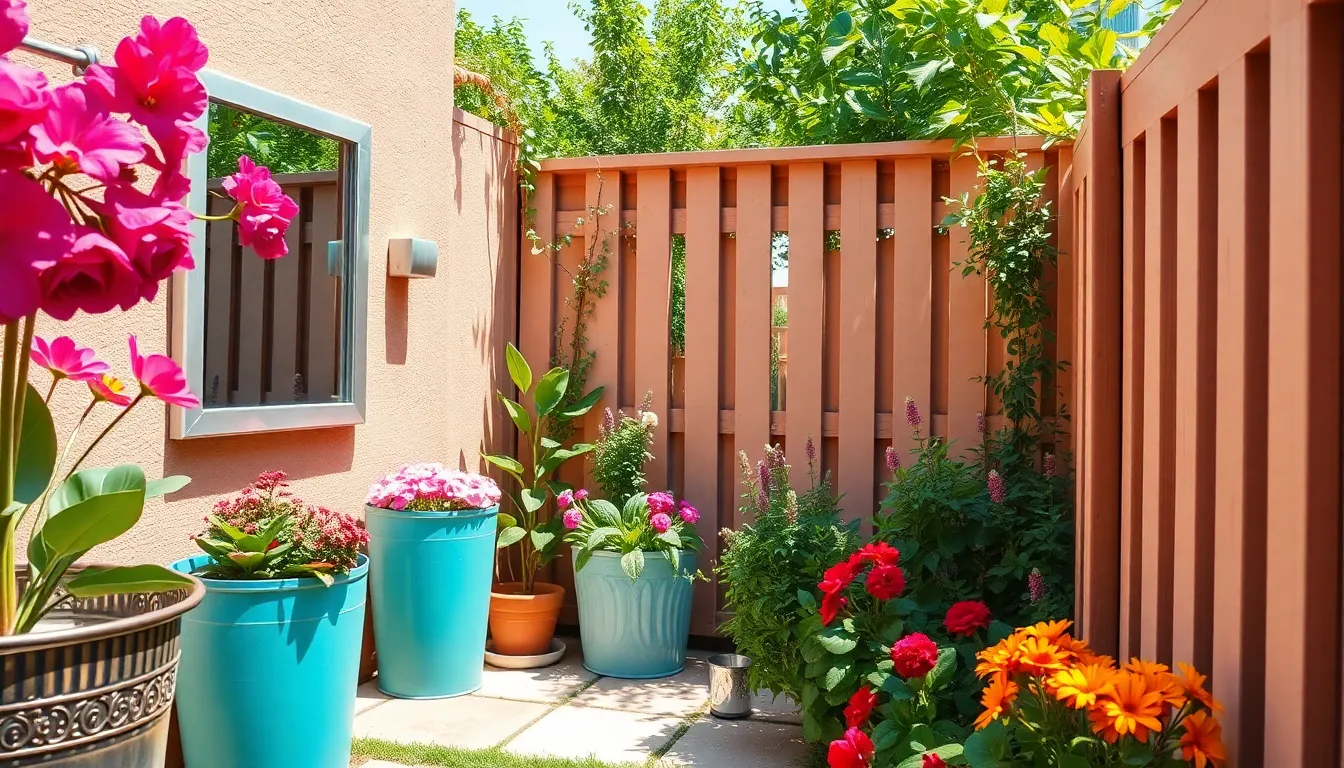
Mirrors transform small yards into seemingly larger spaces through clever optical illusions. We can multiply our garden’s visual impact by strategically placing reflective surfaces that create depth and brightness.
Position Mirrors to Reflect Garden Views
Positioning mirrors opposite attractive focal points doubles the visual impact of our most beautiful garden features. We should place mirrors where they’ll capture and reflect areas with abundant greenery, creating the illusion that our garden extends beyond its actual boundaries. Mirrors work best when positioned at eye level near seating areas or along natural sightlines where we typically look.
Mounting mirrors on exterior walls facing our garden beds creates an instant sense of expanded space. The reflection makes it appear as though we have twice the planting area, especially effective when mirrors capture colorful flowers or lush foliage. We can angle mirrors slightly downward to reflect more of the garden floor and plantings rather than sky.
Framing garden views with strategically placed mirrors draws the eye naturally across our space. This technique works particularly well when we position mirrors to reflect pathways or garden rooms, making walkways appear longer and creating visual corridors that extend the perceived boundaries of our yard.
Use Reflective Surfaces on Fences and Walls
Installing mirrored panels on fence sections transforms boring boundaries into space expanding features. We can mount weather resistant mirrors directly onto fence posts or walls, creating reflective zones that bounce light and garden views back into our space. Mirrored panels work especially well on north facing walls that receive less natural light.
Applying glossy paint finishes to fence surfaces creates subtle reflective qualities without the dramatic effect of mirrors. Light colored glossy paints on fence boards reflect more light back into our garden, brightening shadowy corners and making the space feel more open. We can choose colors that complement our garden’s palette while maximizing reflective properties.
Incorporating metallic garden art and shiny planters adds sparkle and reflection throughout our vertical surfaces. Stainless steel sculptures, copper garden screens, and polished metal planters create multiple reflection points that catch and scatter light. These reflective accents work particularly well when placed against darker fence materials or green backgrounds.
Create Illusion of Depth With Strategic Placement
Arranging mirrors to capture angled views of pathways makes our walkways appear significantly longer. We should position mirrors at pathway corners or endpoints where they’ll reflect the length of our garden paths, creating the illusion of extended routes through our space. This technique works best with mirrors placed at slight angles rather than straight on.
Mounting mirrors on vertical structures like trellises and arbors creates repeating patterns that visually double our plant displays. When we attach mirrors to fence mounted trellises covered with climbing plants, the reflection shows both the actual plants and their mirror image, creating the appearance of a much fuller, more lush vertical garden display.
Positioning mirrors near seating areas captures and reflects multiple garden angles simultaneously. We can place mirrors where they’ll show different sections of our garden from our favorite viewing spots, creating a panoramic effect that makes our small space feel like it has multiple garden rooms and varied landscapes to explore.
Add Lighting to Extend Garden Enjoyment Hours
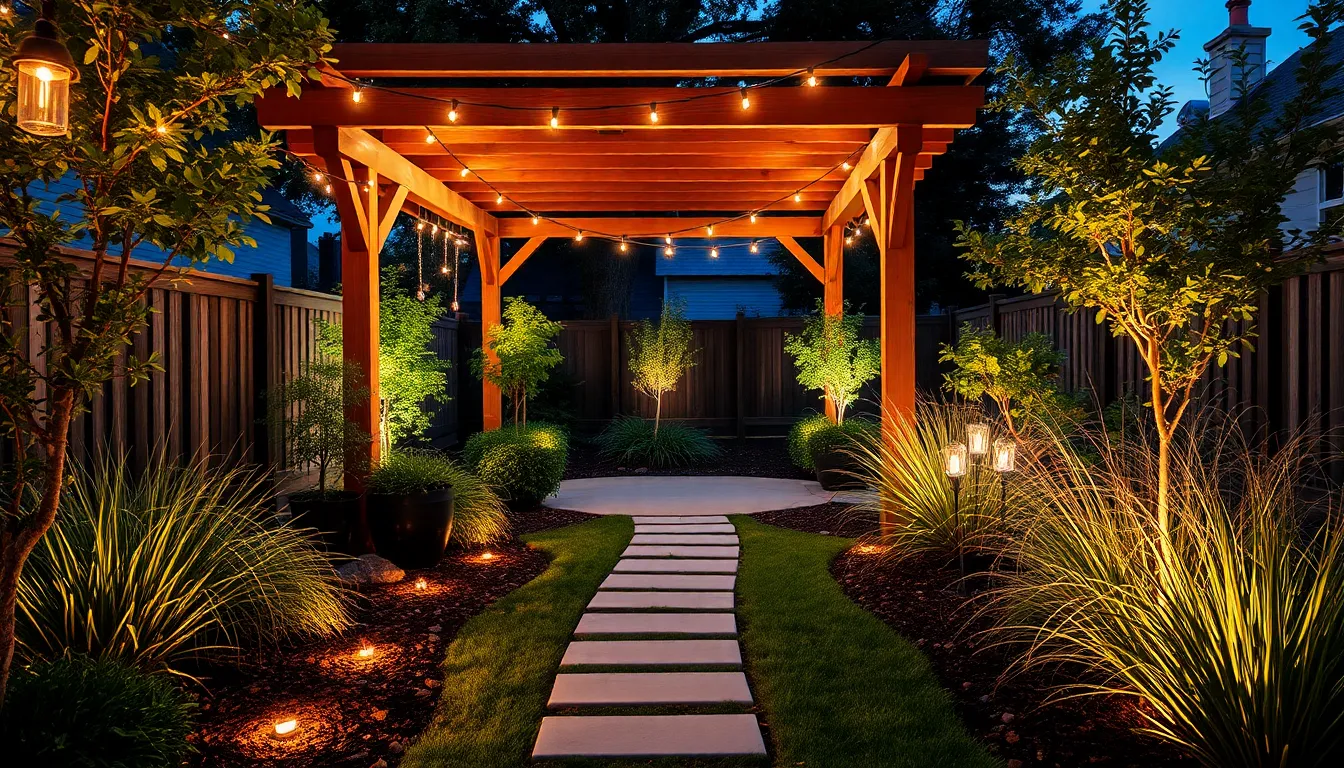
Strategic lighting transforms our small garden spaces from daytime sanctuaries into enchanting evening retreats. We’ll discover how proper illumination extends our outdoor enjoyment well beyond sunset hours.
Install Solar-Powered Path Lights
Solar-powered path lights offer energy-efficient illumination while keeping our electricity bills unchanged. We position these fixtures along walkways and garden borders to create safe navigation routes through our compact outdoor spaces.
Modern solar lights charge during daylight hours and automatically activate at dusk, eliminating the need for manual operation. We recommend spacing them 6-8 feet apart for optimal coverage without overwhelming our small garden design. Strategic placement near raised beds and container gardens provides functional lighting while highlighting our carefully cultivated plant displays.
Weatherproof solar fixtures withstand seasonal changes and require minimal maintenance throughout the year. We choose models with adjustable brightness settings to customize the ambiance for different occasions and seasons.
Hang String Lights for Ambient Atmosphere
String lights create warm, inviting atmospheres that make our small gardens feel like magical outdoor rooms. We hang these versatile lighting elements along pergolas, fence lines, and overhead structures to establish cozy gathering spaces.
LED string lights consume less energy while providing consistent illumination throughout extended evening hours. We weave them through climbing plants and vertical garden structures to blend functional lighting with our existing design elements. Weather-resistant options ensure year-round performance without frequent replacements.
Multiple hanging heights add visual depth and interest to our compact spaces while avoiding harsh shadows. We combine warm white bulbs with colored options to create seasonal themes and special occasion displays that enhance our garden’s evening appeal.
Use Uplighting to Highlight Key Plants
Uplighting showcases our most impressive garden features while adding dramatic visual interest after dark. We position spotlights at the base of specimen trees, architectural plants, and vertical growing structures to create stunning silhouettes against walls and fences.
Ground-level fixtures directed upward emphasize the texture and form of our carefully selected compact varieties. We focus these accent lights on dwarf fruit trees, ornamental grasses, and climbing plants that provide interesting shadows and movement. Strategic uplighting makes our small gardens appear larger by drawing attention to vertical elements and creating depth.
Adjustable beam angles allow us to fine-tune the lighting effects throughout different seasons as our plants grow and change. We use timers and motion sensors to control these accent lights efficiently while maintaining the security benefits of well-lit outdoor spaces.
Design Efficient Pathways for Small Garden Navigation
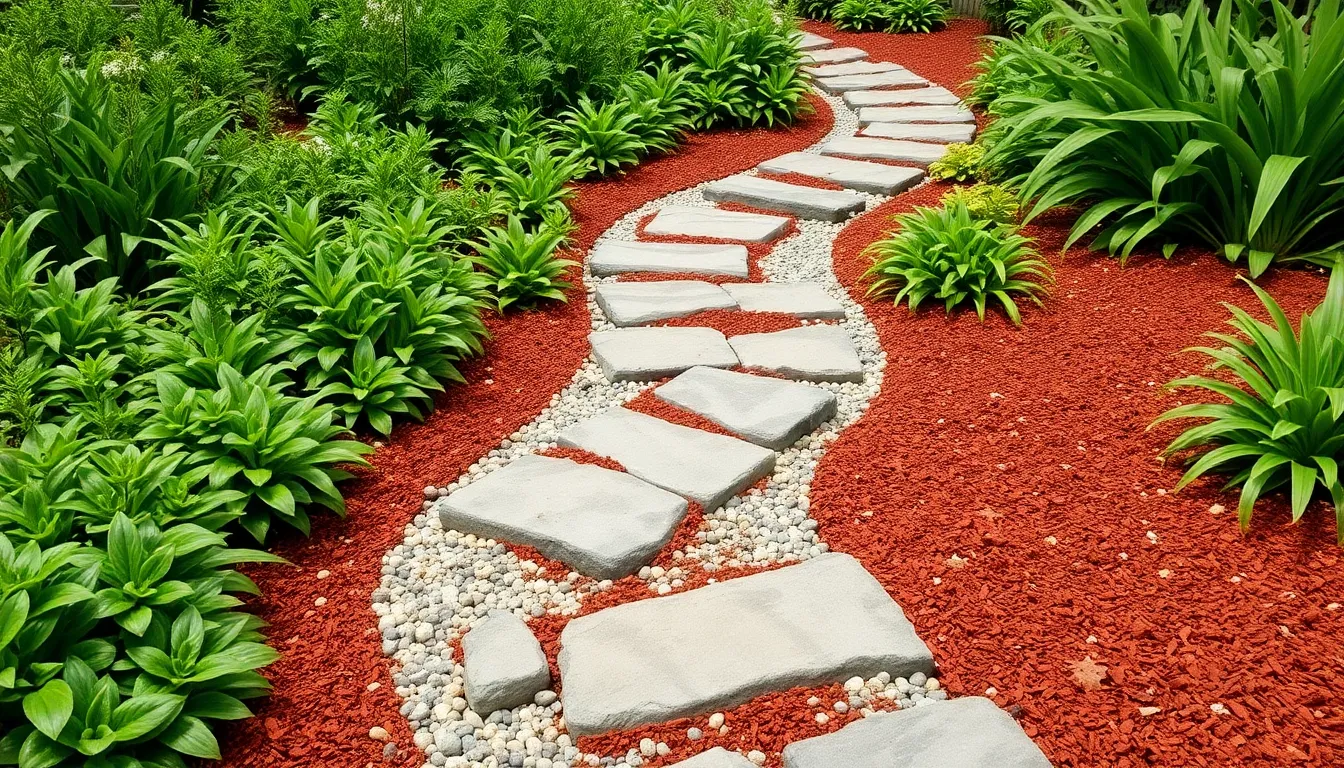
Smart pathway design becomes essential when working with limited garden space. We’ll explore three practical approaches that maximize navigation while preserving precious growing areas.
Create Stepping Stone Walkways
Stepping stones offer the perfect solution for maintaining clear navigation without sacrificing valuable planting space. We can arrange these stones in gentle curves or straight lines to guide visitors through different garden zones while creating visual interest.
Natural stone materials like flagstone or slate provide durability and blend seamlessly with surrounding plantings. We recommend spacing stones 18-24 inches apart for comfortable walking, allowing ground cover plants to fill the gaps between each stone.
Strategic placement of stepping stones helps define garden boundaries and creates focal points throughout the space. We can use different stone sizes to add rhythm and visual texture, with larger stones serving as natural stopping points to admire exact plant displays.
Install Narrow Gravel Paths
Gravel pathways deliver exceptional value for small garden spaces through their cost effectiveness and minimal maintenance requirements. We can install these paths in widths as narrow as 2-3 feet, making them ideal for tight spaces while still providing comfortable passage.
Pea gravel and decomposed granite work particularly well for narrow applications, staying in place better than larger stone varieties. We should edge these paths with metal or stone borders to prevent gravel migration into planted areas.
Different gravel colors and textures help distinguish various garden sections while maintaining a cohesive design aesthetic. We can create subtle transitions between spaces by varying gravel size or introducing stepping stones at key intersection points.
Use Mulch Borders to Define Garden Edges
Mulch serves dual purposes by defining pathway edges while suppressing weed growth along garden borders. We can use organic materials like shredded bark or wood chips to create clean lines that separate walking areas from planted beds.
Strategic mulch placement helps maintain the organized appearance essential for small garden success. We should apply mulch in 2-3 inch layers along pathway edges, creating clear visual boundaries that guide foot traffic away from delicate plantings.
Color coordinated mulch choices enhance overall garden cohesion while reducing maintenance demands throughout the growing season. We can refresh mulch borders annually to maintain crisp edges and continue benefiting from their weed suppressing properties.
Conclusion
Small yards don’t have to limit our gardening dreams. With the right strategies and creative thinking we can transform even the tiniest outdoor spaces into thriving garden sanctuaries that rival much larger landscapes.
The key lies in thinking vertically using every available surface and choosing plants that deliver maximum impact in minimal space. Whether we’re working with containers mirrors or multi-level beds each technique helps us squeeze more beauty and function from our compact growing areas.
Remember that successful small-space gardening is about working with what we have rather than against it. Every square foot becomes precious real estate when we approach it with intention and creativity. Our small yards can become the most charming and productive spaces we’ve ever grown.
Frequently Asked Questions
What are the best ways to maximize vertical space in a small garden?
Install wall-mounted planters at varying heights and use climbing plants with trellises. Create living walls with fast-growing vines like ivy and clematis. Build multi-level garden beds and tiered container gardens to create the illusion of a larger space while accommodating various plant species.
Which plants work best for small garden spaces?
Choose compact varieties like dwarf fruit trees (apple, pear, cherry), compact blueberry bushes, and mini vegetables such as cherry tomatoes. Select flowering perennials like lavender, miniature roses, and creeping thyme that provide beauty and fragrance while requiring minimal maintenance and space.
How can I create functional zones in my small garden?
Designate a cozy seating area with bistro sets or built-in benches. Create a dedicated herb garden corner using vertical planters and tiered shelves. Set up a small composting station for organic waste recycling. Use container gardens to enhance privacy and define different functional areas.
What are the benefits of raised garden beds in small spaces?
Raised planter boxes improve soil quality and drainage while making maintenance easier. They provide better soil control, reduce back strain during gardening, and help organize clear pathways. Raised construction also maximizes growing space and creates visual interest in compact areas.
How can mirrors help make my small garden look bigger?
Strategically place mirrors to reflect attractive focal points and garden views, effectively doubling visual impact. Mount mirrors on exterior walls or fences to enhance brightness and depth. Use reflective surfaces to frame garden views and create visual corridors that make pathways appear longer.
What lighting options work best for small gardens?
Install solar-powered path lights for energy-efficient illumination along walkways. Use string lights to create warm, inviting atmospheres. Add uplighting to showcase key plants and create dramatic visual interest after dark. These options extend outdoor enjoyment from day to night.
How should I design pathways in a small garden?
Create stepping stone walkways using natural stone materials to maintain clear paths without sacrificing planting space. Install narrow gravel paths for cost-effective, low-maintenance navigation. Use mulch borders to define garden edges and suppress weed growth while maintaining organization.
What container gardening strategies work for small spaces?
Mix and match decorative pots to enhance visual interest. Use rolling planters for mobility to relocate plants based on sunlight and weather. Layer containers in tiered arrangements to create dramatic vertical displays that maximize growing space and aesthetic appeal.

